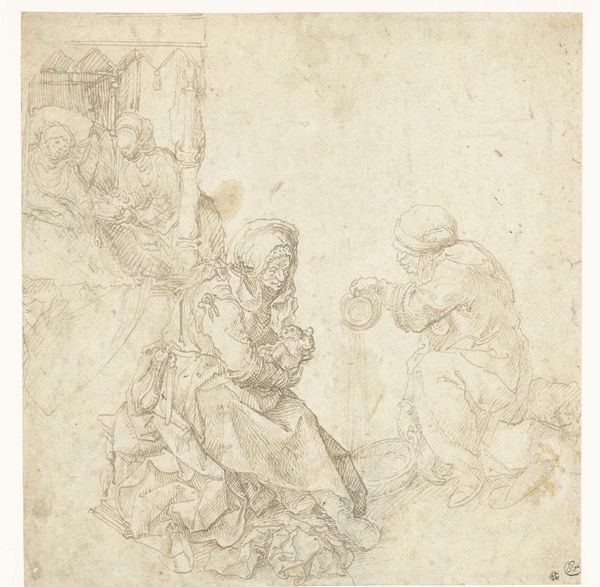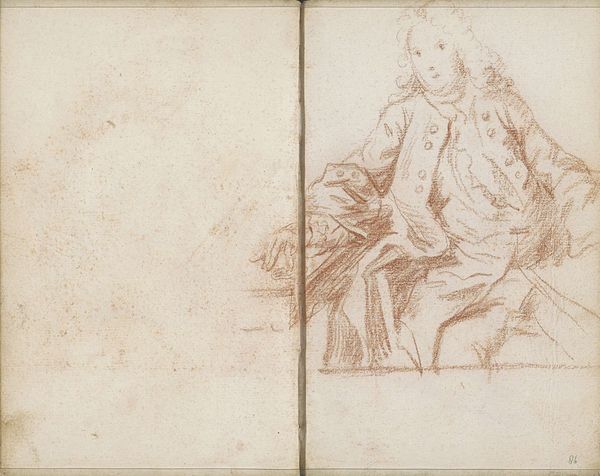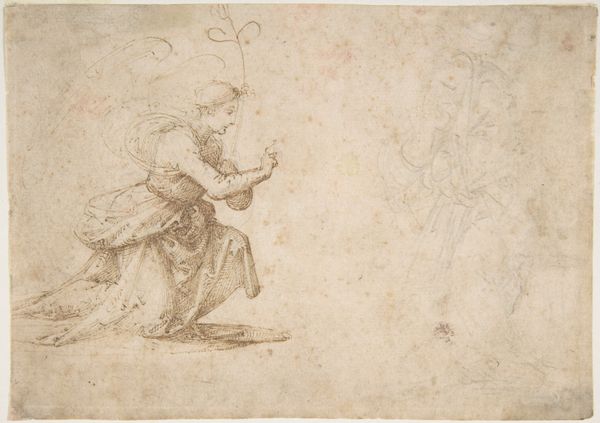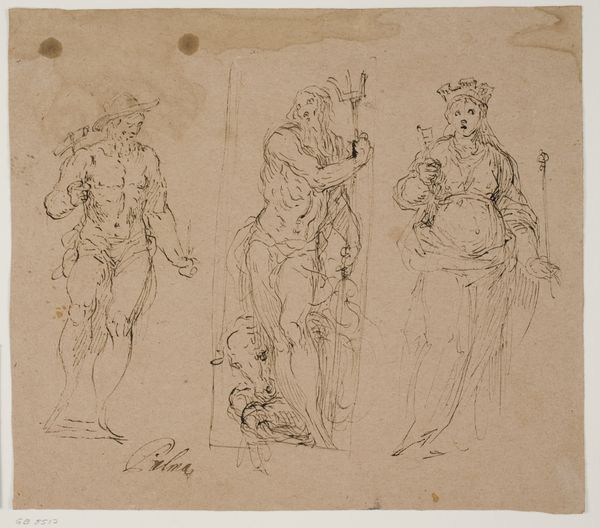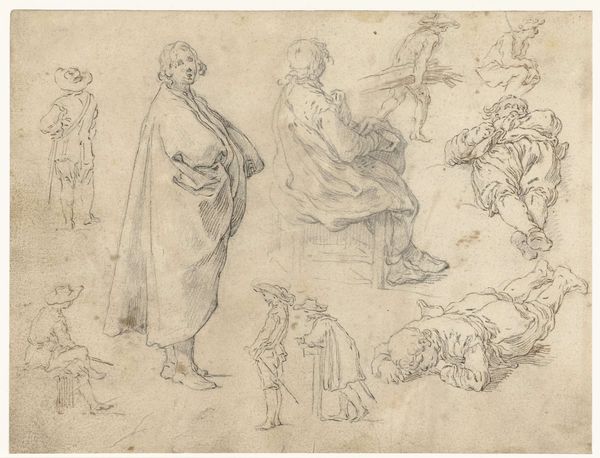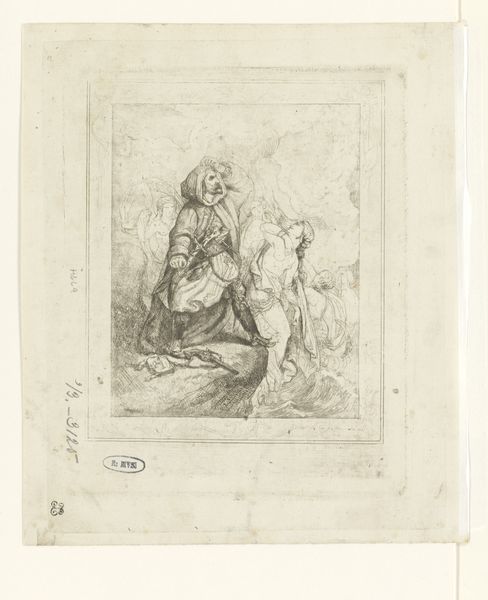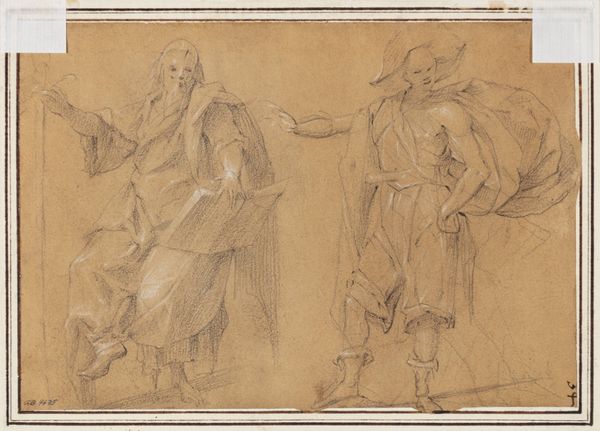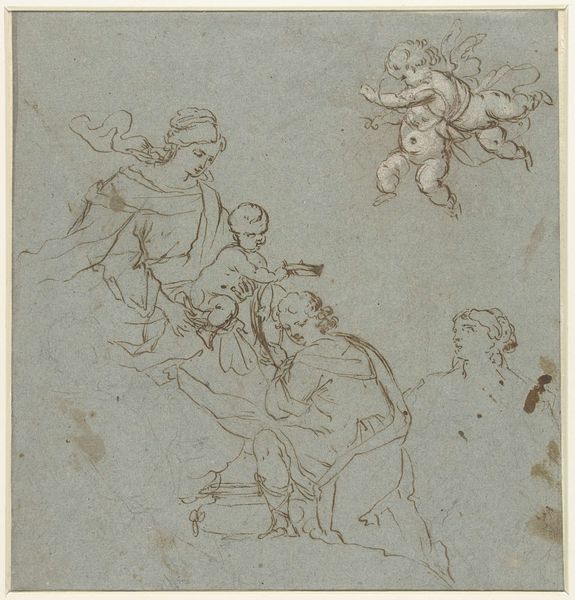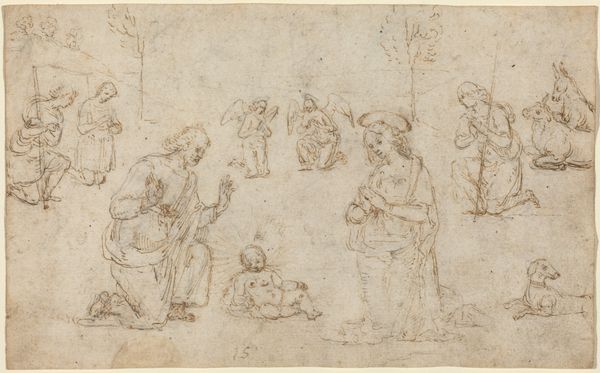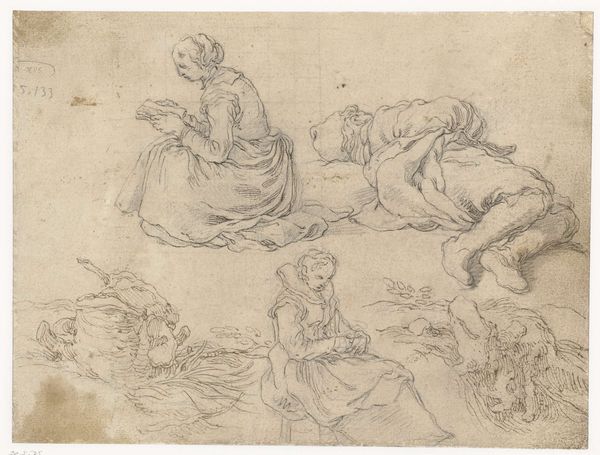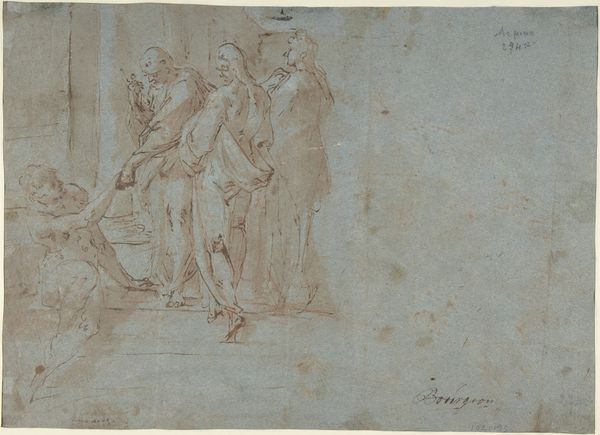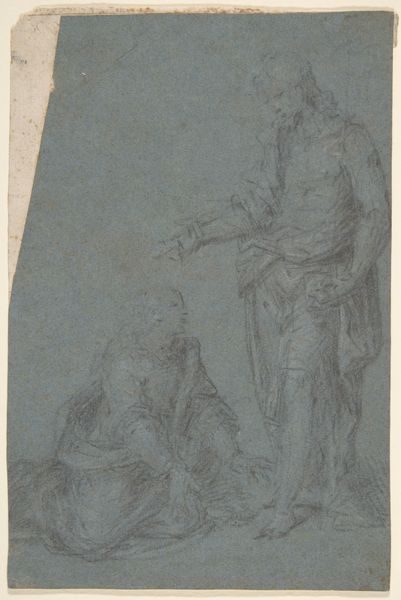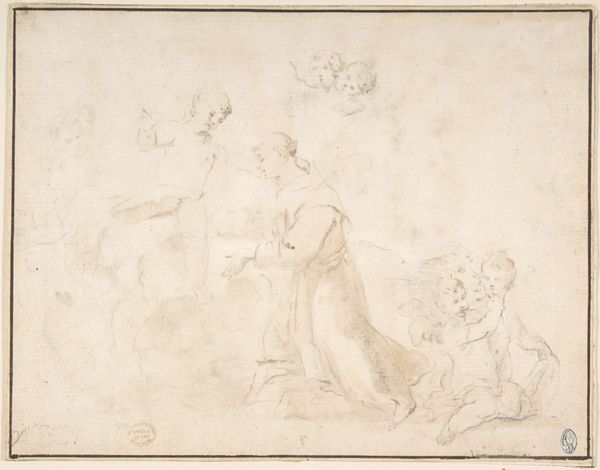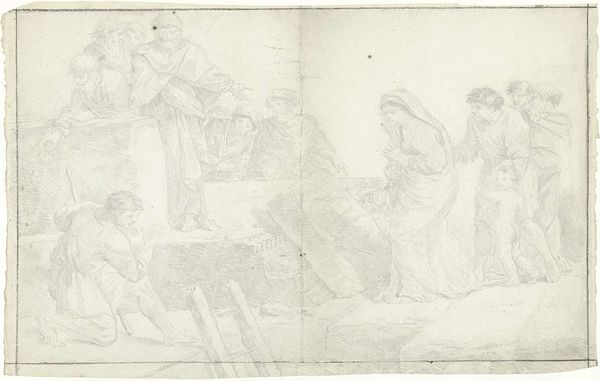
drawing, paper, pencil
#
portrait
#
drawing
#
toned paper
#
light pencil work
#
quirky sketch
#
baroque
#
pencil sketch
#
incomplete sketchy
#
paper
#
personal sketchbook
#
ink drawing experimentation
#
pen-ink sketch
#
pencil
#
sketchbook drawing
#
genre-painting
#
sketchbook art
Dimensions: height 218 mm, width 165 mm
Copyright: Rijks Museum: Open Domain
Curator: Abraham Bloemaert's "Two Seated Boys," likely created between 1625 and 1629, is a fascinating sketch held here at the Rijksmuseum. It is a drawing executed in pencil. Editor: It feels wonderfully intimate. There's something immediate about the light pencil work, a feeling of catching a fleeting moment, two children caught in a candid pose. Curator: Indeed. Observe how the artist uses line weight to suggest form and volume. Note, for example, the stark outline that defines the sitter at left in comparison to the very faint articulations and cross-hatching in his dress. The contrast provides a sense of depth, grounding the boys within the pictorial space despite the seeming lack of background detail. Editor: Absolutely. Their dress, though rendered with relatively minimal strokes, speaks volumes. The hat on the figure at right—do you see an echo of the prodigal son there? His slightly disheveled clothing hints at a carefree, perhaps even rebellious spirit, set against the somewhat more constrained attire of his companion, even considering it’s just a light sketch. Curator: That’s a compelling reading! Thinking more purely in terms of composition, though, what's striking is the way Bloemaert achieves balance, using tonal variation. We move almost without noticing from an implied background, and a dark set of shapes for the figures’ clothing to an increasingly light series of sketched outlines describing limbs and feet. The boys appear connected by some external plane despite lacking direct engagement. Editor: I agree, it's interesting the way he almost creates a conversation without contact; their shared posture evokes shared experiences and silent complicity. Maybe it's an over-reading, but the downcast eyes of one, and the apparent frustration of the other conjure a broader narrative beyond their immediate circumstances, a slice of everyday 17th-century life rendered with incredible immediacy. Curator: It underscores the power of the sketch to capture not only visual information, but also psychological states with minimal means. The efficiency is admirable. Editor: Yes, it's a captivating glimpse into the lives of these boys, as filtered through the sensibilities and symbols of the era. Thank you. Curator: And, likewise, thank you for exploring form in symbolism.
Comments
No comments
Be the first to comment and join the conversation on the ultimate creative platform.
